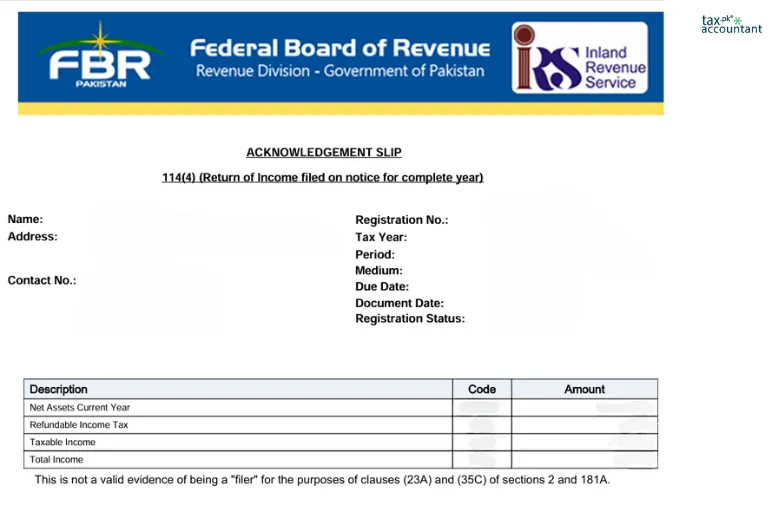Trademark registration is a crucial step for businesses aiming to protect their brand identity in Pakistan. A trademark serves as a symbol of quality and trust, distinguishing your goods or services from those of others.
In this blog post guide, we will provide you an in-depth, step-by-step guide on how to register a trademark in Pakistan, covering the entire process, necessary documentation, and the benefits of registration.
What is a Trademark?
A trademark can be defined as any distinctive sign, logo, word, or phrase that identifies and distinguishes the source of goods or services of one party from those of others. It provides legal protection to your brand and helps prevent unauthorized use by competitors.
Why Register a Trademark?
Registering a trademark offers several advantages:
- Legal Protection: It grants exclusive rights to use the trademark in connection with specific goods or services.
- Brand Recognition: A registered trademark enhances brand recognition and consumer trust.
- Prevent Infringement: It helps prevent others from using similar marks that could confuse consumers.
- Asset Value: A registered trademark can increase the value of your business and can be sold or licensed.
The Trademark Registration Process in Pakistan
The process for registering a trademark in Pakistan involves several key steps:
Step 1: Conduct a Trademark Search
Before applying for registration, it is essential to conduct a thorough search to ensure that your desired trademark is not already registered or in use. This can be done by:
- Visiting the Intellectual Property Organization (IPO) of Pakistan’s website.
- Filling out Form TM-55 to request a search.
This step helps avoid potential conflicts and objections later in the process.
Step 2: Identify the Appropriate Trademark Class
Pakistan follows the Nice Classification, which categorizes goods and services into 45 classes. Identifying the correct class is vital for ensuring that your trademark is protected appropriately. Each application can only cover one class; if you wish to register in multiple classes, separate applications must be filed for each.
Step 3: Prepare and Submit the Application
Once you have confirmed the availability of your trademark and identified its class, you need to prepare your application. This involves filling out Form TM-1 (and potentially TM-2) with the following information:
- Applicant’s name and address.
- Details about the trademark (word mark, logo, etc.).
- Description of goods/services associated with the trademark.
You must also provide six representations of the trademark. The application can be submitted either online or in person at IPO offices located in major cities like Karachi, Lahore, or Islamabad.
Step 4: Pay Application Fees
Upon submission of your application, you will need to pay an application fee. The fee structure may vary based on factors such as the number of classes being registered and whether you are filing online or offline. Payment can be made via bank draft or pay order made out to the Director General IPO.
Step 5: Formalities Assessment
After submission, the IPO conducts a formalities assessment. This involves reviewing your application for completeness and adherence to legal requirements. If any discrepancies are found, you will be notified and given a period (usually 30 days) to rectify them.
Step 6: Publication in the Trademark Journal
If your application passes the formalities assessment without objections, it will be published in the Trademark Journal. This publication serves as a public notice and initiates an opposition period during which third parties can challenge your application.
Step 7: Opposition Period
The opposition period lasts for two months from the date of publication. During this time, any party who believes they may be harmed by your registration can file an opposition. If no oppositions are filed within this period, or if you successfully defend against any opposition, your application will proceed toward registration.
Step 8: Final Registration
After overcoming any opposition challenges, you will receive a demand notice for payment of the registration fee along with Form TM-11. Once this fee is paid, IPO will issue a certificate of registration for your trademark.
Required Documents for Trademark Registration
To ensure a smooth registration process, prepare the following documents:
- Completed application forms (TM-1 and TM-2).
- Six representations of the trademark.
- Proof of identity (e.g., CNIC or passport).
- Proof of business incorporation (if applicable).
- Power of Attorney (Form TM-48) if filing through an attorney.
Duration of Trademark Registration
The entire process from application submission to final registration typically takes between 12 to 18 months, depending on various factors such as objections raised during publication and processing times at IPO.
Renewal of Trademark Registration
A registered trademark in Pakistan is valid for 10 years from the date of application. However, it can be renewed indefinitely for successive periods of ten years upon payment of renewal fees. It’s crucial to keep track of renewal deadlines to maintain legal protection over your brand.
Trademark registration is an essential aspect of safeguarding your business identity in Pakistan. By following this comprehensive guide and ensuring all steps are meticulously executed, you can secure exclusive rights to your brand and enhance its value in the marketplace.
For further assistance or legal guidance throughout this process, consider consulting with a qualified trademark attorney who specializes in intellectual property law.
Are there any specific guidelines for trademark logos and symbols in Pakistan?
Trademark registration in Pakistan is governed by the Trade Marks Ordinance, 2001 and the Trade Marks Rules, 2004. These regulations provide a framework for protecting trademarks, including logos and symbols. This article outlines the specific guidelines related to trademark logos and symbols in Pakistan, ensuring that businesses understand how to effectively register and protect their brand identities.
Understanding Trademarks
A trademark can encompass various forms, including:
- Logos: Graphical representations that symbolize a brand.
- Symbols: Icons or images that convey a specific meaning associated with a brand.
- Word Marks: Textual representations of the brand name.
- Combined Marks: A combination of text and graphics.
Legal Framework for Trademark Registration
The legal framework in Pakistan is designed to ensure that trademarks serve their purpose effectively. The key legislation includes:
- Trade Marks Ordinance, 2001: This ordinance outlines the registration process, rights conferred upon registration, and grounds for refusal of registration.
- Trade Marks Rules, 2004: These rules detail procedural aspects such as application forms, fees, and examination processes.
Key Guidelines for Trademark Logos and Symbols
1. Distinctiveness
To qualify for trademark protection, logos and symbols must be distinctive. This means they should be capable of identifying the source of goods or services. The more unique a logo is, the stronger its protection under trademark law.
- Avoid Generic Symbols: Logos that are generic or descriptive may not be eligible for registration. For instance, a logo depicting a fruit for a juice brand may be considered too generic.
2. Non-Confusion with Existing Trademarks
When designing a logo or symbol, it is crucial to ensure that it does not resemble existing trademarks. The Intellectual Property Organization (IPO) of Pakistan conducts thorough searches to avoid confusion among consumers.
- Conduct a Trademark Search: Before filing an application, conduct a comprehensive search using Form TM-55 to ensure your logo does not infringe on existing trademarks.
3. Compliance with Legal Restrictions
Certain symbols and logos may be prohibited from registration under Pakistani law. For example:
- National Symbols: Logos that incorporate national flags or emblems are generally not registrable.
- Deceptive Marks: Any symbol that may mislead consumers about the nature or quality of goods/services is also disallowed.
4. Color Claims
If your logo includes specific colors, you can claim these colors in your application. However, claiming color limits your trademark rights to those specific colors only.
- Color Specification: If you wish to protect your logo in multiple colors, you must specify this in your application; otherwise, it may be registered as a mark that can appear in any color.
5. Representation Requirements
When submitting an application for trademark registration in Pakistan, you must provide clear representations of your logo or symbol:
- Number of Copies: Submit six representations of the logo on strong paper (13×8 inches).
- Clarity and Quality: Ensure that the representations are high-quality images that accurately depict the logo.
6. Application Process
The application process for registering a trademark logo involves several steps:
- Filing Form TM-1: Complete Form TM-1 with details about the applicant and the trademark.
- Payment of Fees: Pay the required fees based on the type of applicant (individual or corporate) and filing method (online or offline).
- Publication in Trademark Journal: If accepted, your logo will be published in the Trademark Journal for public opposition.
- Opposition Period: A two-month period during which third parties can oppose the registration if they believe it infringes on their rights.
- Issuance of Registration Certificate: If no opposition is filed or if resolved favorably, you will receive a certificate granting exclusive rights to use your trademarked logo.
Benefits of Registering Your Logo as a Trademark
Registering your logo as a trademark offers numerous advantages:
- Legal Protection: Exclusive rights to use your logo in connection with your goods or services.
- Brand Recognition: A registered trademark enhances consumer trust and recognition.
- Asset Value: Your trademark becomes an intangible asset that can increase the overall value of your business.
Understanding the guidelines for trademark logos and symbols in Pakistan is essential for businesses looking to protect their brand identity effectively. By ensuring distinctiveness, avoiding confusion with existing trademarks, complying with legal restrictions, and following proper application procedures, businesses can secure their logos as valuable trademarks under Pakistani law.
What are the requirements for using the registered symbol (®) in Pakistan?
The registered trademark symbol (®) is a significant indicator of legal ownership and protection of a trademark in Pakistan. This symbol can only be used by trademark owners who have successfully registered their trademarks with the Intellectual Property Organization (IPO) of Pakistan. Here are the specific requirements and guidelines for using the registered symbol in Pakistan.
1. Successful Trademark Registration
The primary requirement for using the ® symbol is that the trademark must be officially registered with the IPO. This involves completing the entire trademark registration process, which includes:
- Conducting a Trademark Search: Before applying, it is essential to ensure that the desired trademark is not already in use or registered by another entity.
- Filing an Application: Submit the necessary forms (TM-1 and TM-2) along with required documentation and fees.
- Publication and Opposition Period: After examination, if no objections arise during the opposition period, the trademark will be published in the Trademark Journal.
- Issuance of Registration Certificate: Once all procedures are completed and fees are paid, a registration certificate is issued, granting exclusive rights to use the trademark.
2. Legal Rights Conferred
Once a trademark is registered, the owner is granted exclusive rights to use that trademark in connection with their goods or services. The use of the ® symbol serves as a public notice of these rights, informing others that the mark is legally protected.
3. Proper Usage
The registered symbol should be used correctly to signify that a trademark has been officially registered. Misuse of the ® symbol can lead to legal repercussions. Specifically:
- Only for Registered Trademarks: The ® symbol can only be used in connection with trademarks that have been officially registered. Using it for unregistered trademarks is considered misleading and may result in penalties.
- Prominent Display: The ® symbol should be displayed alongside the trademark on products, packaging, advertising materials, and other promotional items to indicate its registered status.
4. Duration of Use
The rights associated with using the ® symbol last as long as the trademark remains registered. In Pakistan, a registered trademark is valid for 10 years from the date of application and can be renewed indefinitely for additional ten-year periods, provided that renewal fees are paid on time.
5. Consequences of Misuse
Using the ® symbol improperly—such as on an unregistered trademark—can lead to legal action against the offender. This misuse can undermine the credibility of genuine claims to trademark rights and may expose the user to penalties under relevant intellectual property laws.
In summary, to use the registered symbol (®) in Pakistan, a trademark must be officially registered with IPO-Pakistan. This process involves several steps, including application submission, publication for opposition, and issuance of a registration certificate. Proper usage of this symbol not only signifies legal protection but also enhances brand recognition and consumer trust.















One thought on “Trademark Registration in Pakistan: A Comprehensive Guide”